Biology > Lab Experiment > Pre Lab Chemical Weathering Lab - Central Bucks High School South SCIENCE Biology 1 (All)
Pre Lab Chemical Weathering Lab - Central Bucks High School South SCIENCE Biology 1
Document Content and Description Below
Effect of Temperature on Chemical Weathering Water is the most important agent of chemical weathering. One way water promotes chemical weathering is by dissolving the minerals in rocks. In this lab... , you will model the effect of temperature on chemical weathering by measuring the rate at which antacid tablets dissolve in water at different temperatures. These tablets contain calcium carbonate, the mineral found in rocks such as limestone and marble. Testing Question: How does temperature affect the rate of chemical weathering? Hypothesis: ________________________________________________________________________________ Pre-Lab: Read Section 5.1 “Weathering” pages 126-132 in your textbook. Use information from your textbook to answer the following questions. A. How does breaking rock into smaller pieces affect chemical weathering? Whenever there is mechanical weathering, it increases the rate of chemical weathering. This happens because as rock breaks into smaller pieces, the surface area of the pieces increases. B. View figure 8 on page 131. In what type of climate would you expect to find gravestones with significant amounts of chemical weathering? What type of climate would gravestones be less affected by chemical weathering? The climate most common for chemical weathering is high temperatures and rich moisture. Granite is more sustainable while marble gravestones undergo much more rapid chemical weathering. Gravestones wouldn’t weather in cold temperatures and dry moisture. Materials: • 250-mL beaker • thermometer • hot water (40–50°C) • ice • 5 antacid tablets • stopwatch Procedure: 2.Add a mixture of hot water and ice to the beaker. Use the thermometer to measure the temperature of the mixture. Add either more hot water or more ice until the temperature is between 0°C and 10°C. The total volume of the mixture should be about 200 mL. 3.When the [Show More]
Last updated: 1 year ago
Preview 1 out of 3 pages
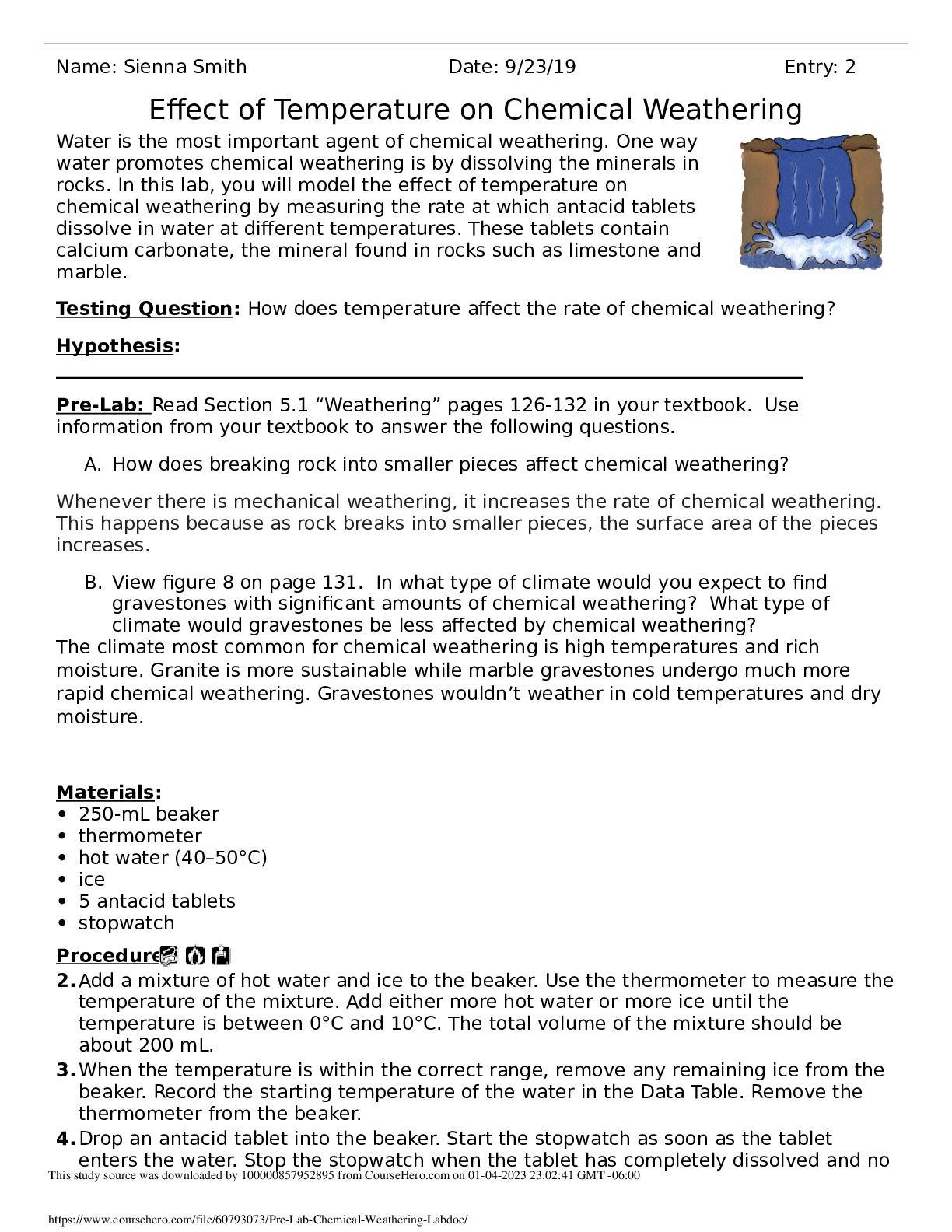
Reviews( 0 )
Document information
Connected school, study & course
About the document
Uploaded On
Jan 05, 2023
Number of pages
3
Written in
Additional information
This document has been written for:
Uploaded
Jan 05, 2023
Downloads
0
Views
82


.png)
.png)
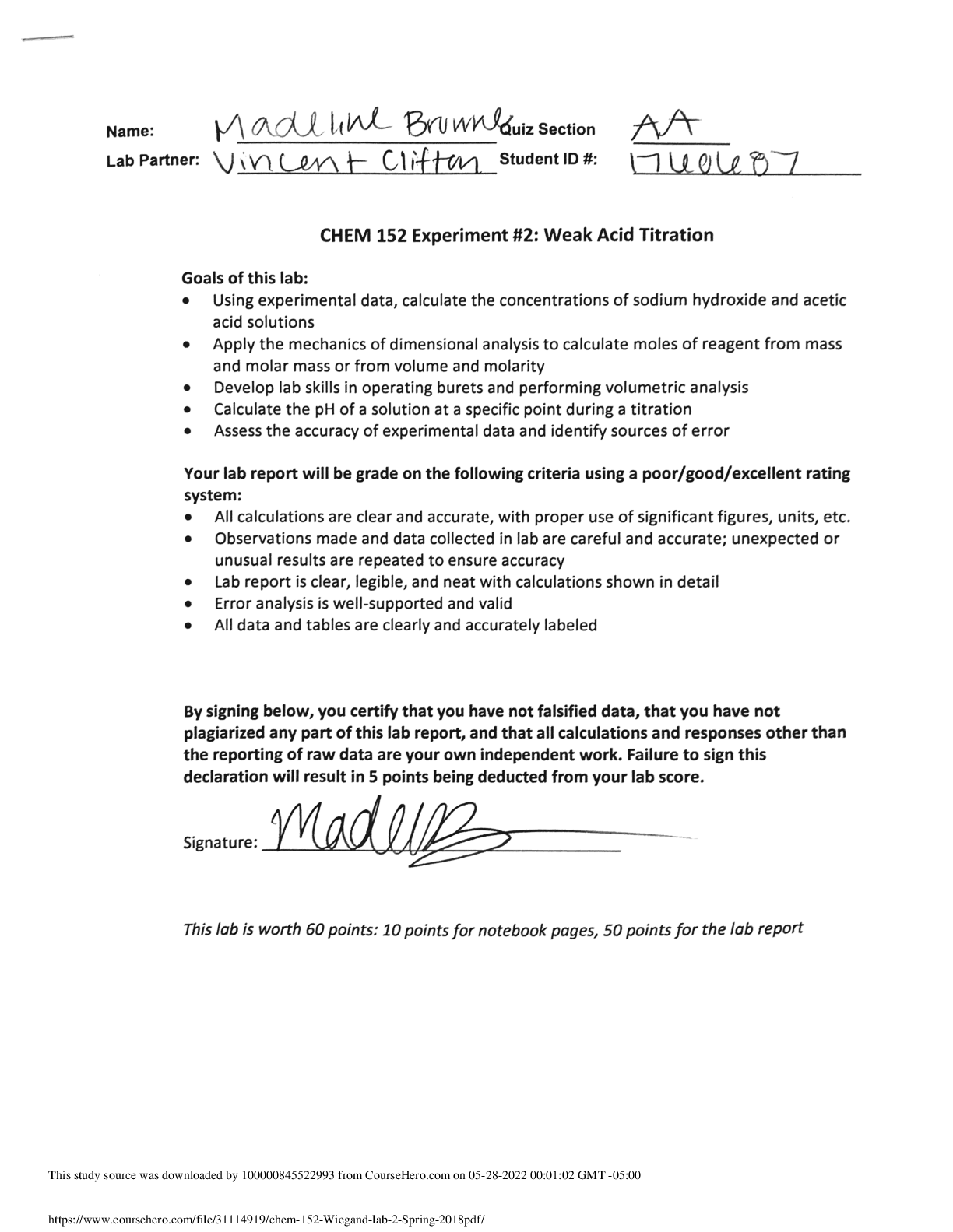
.png)
.png)
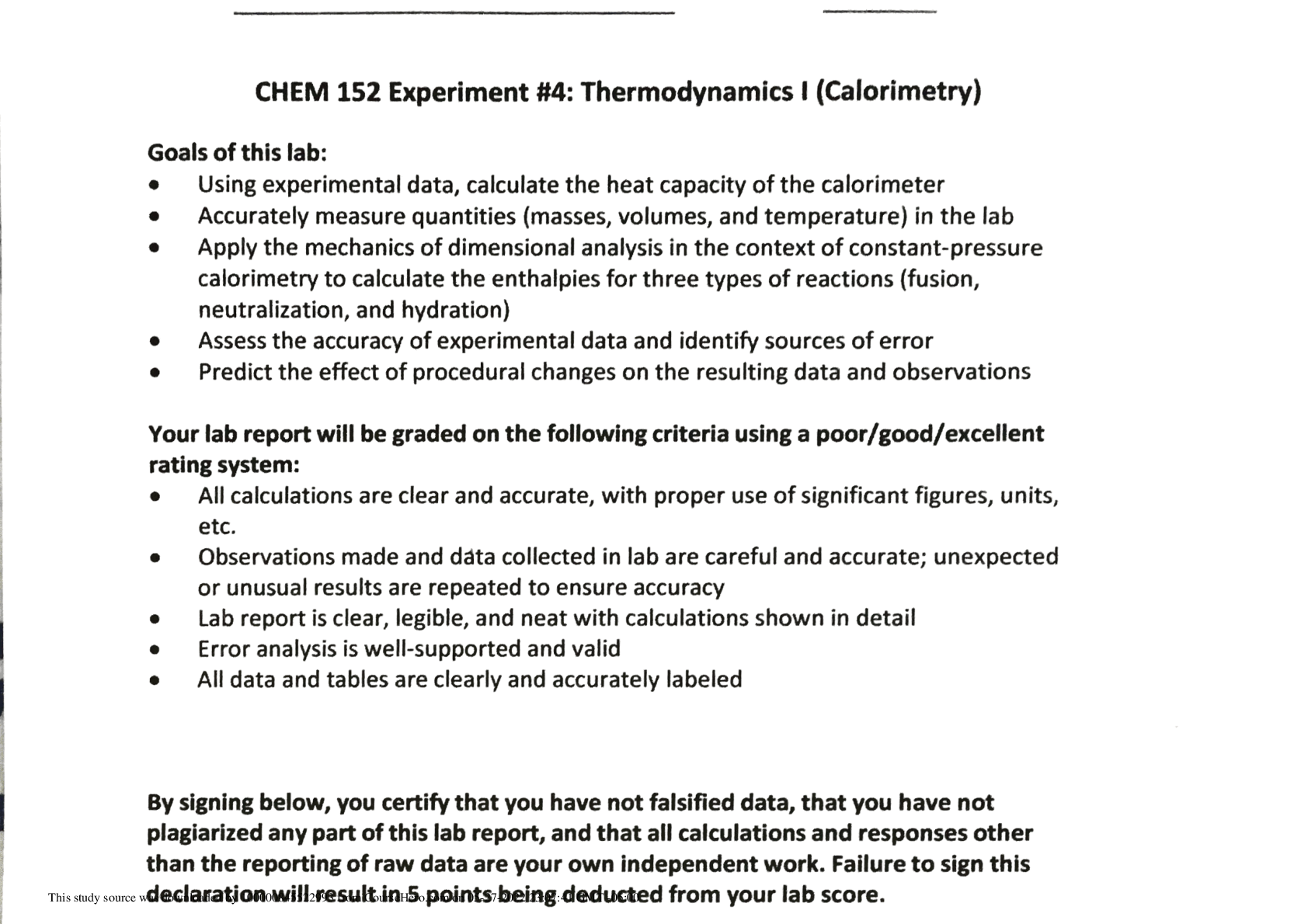
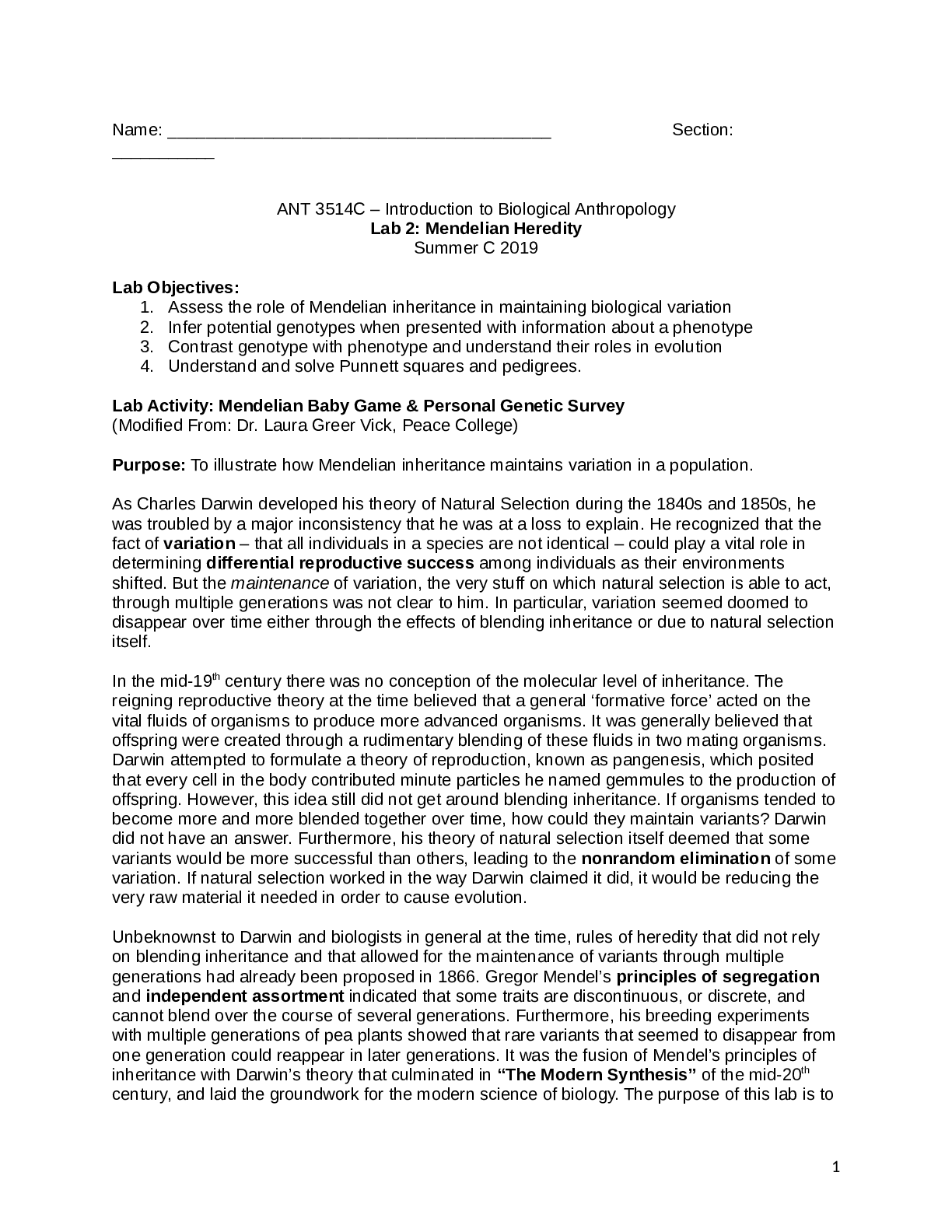
.png)
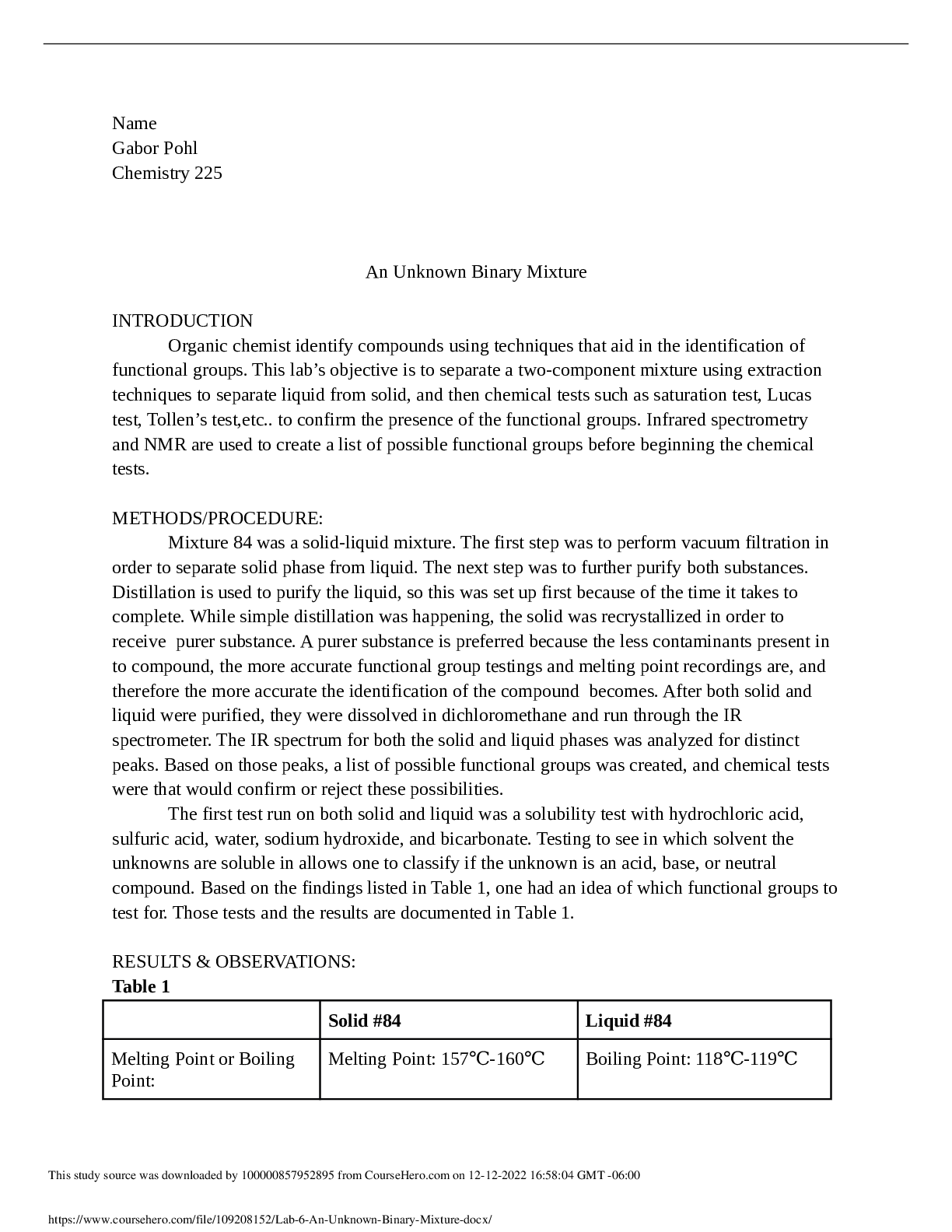

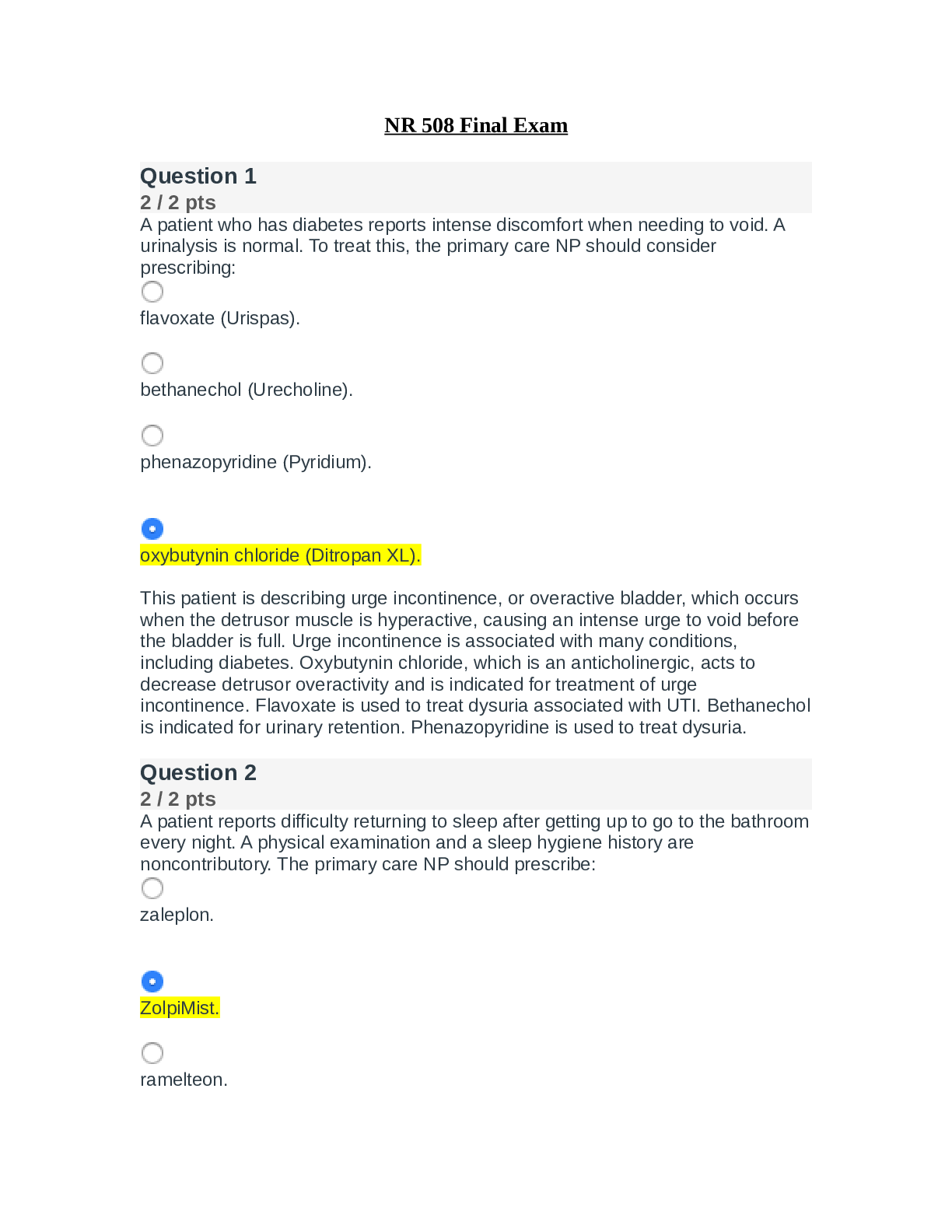

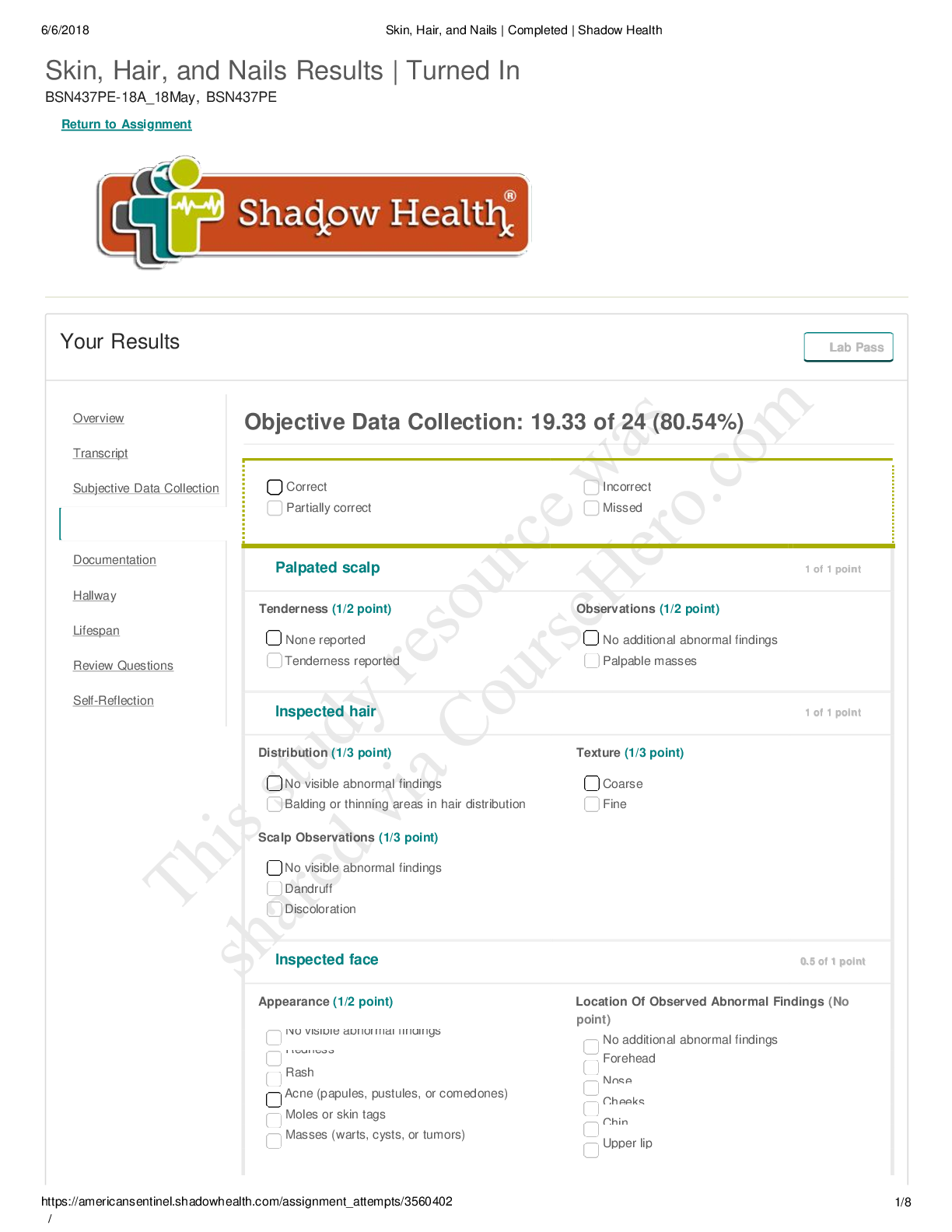


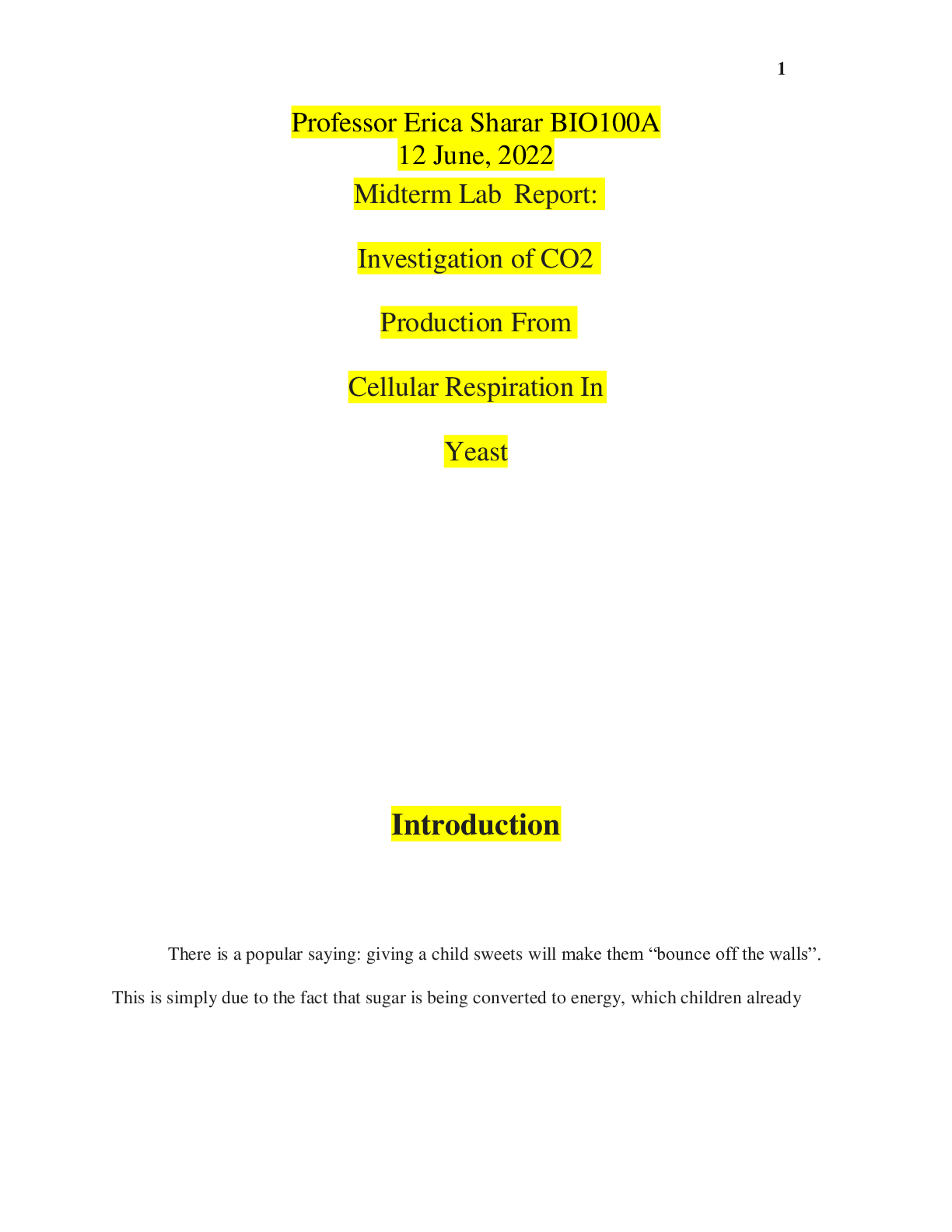

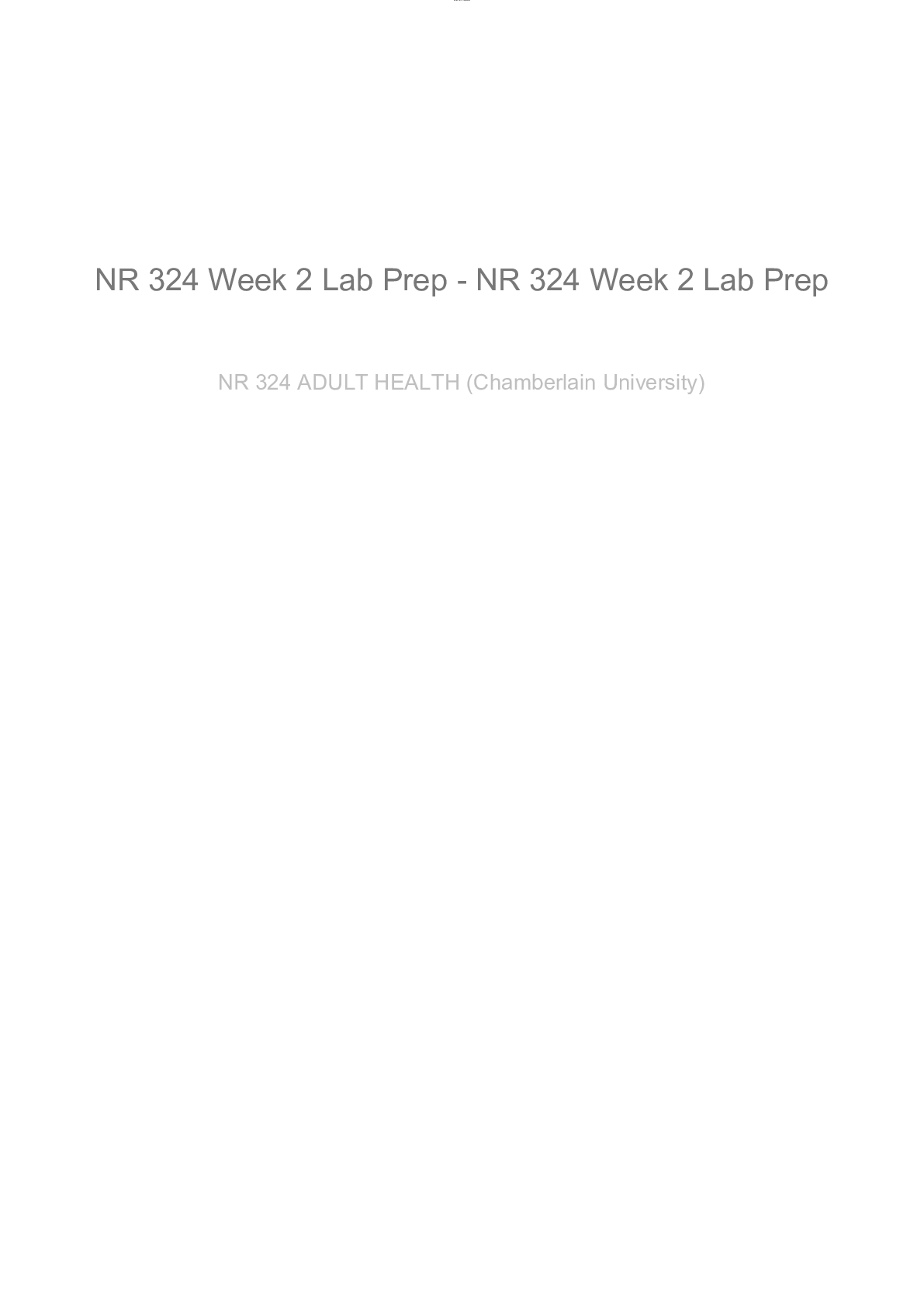
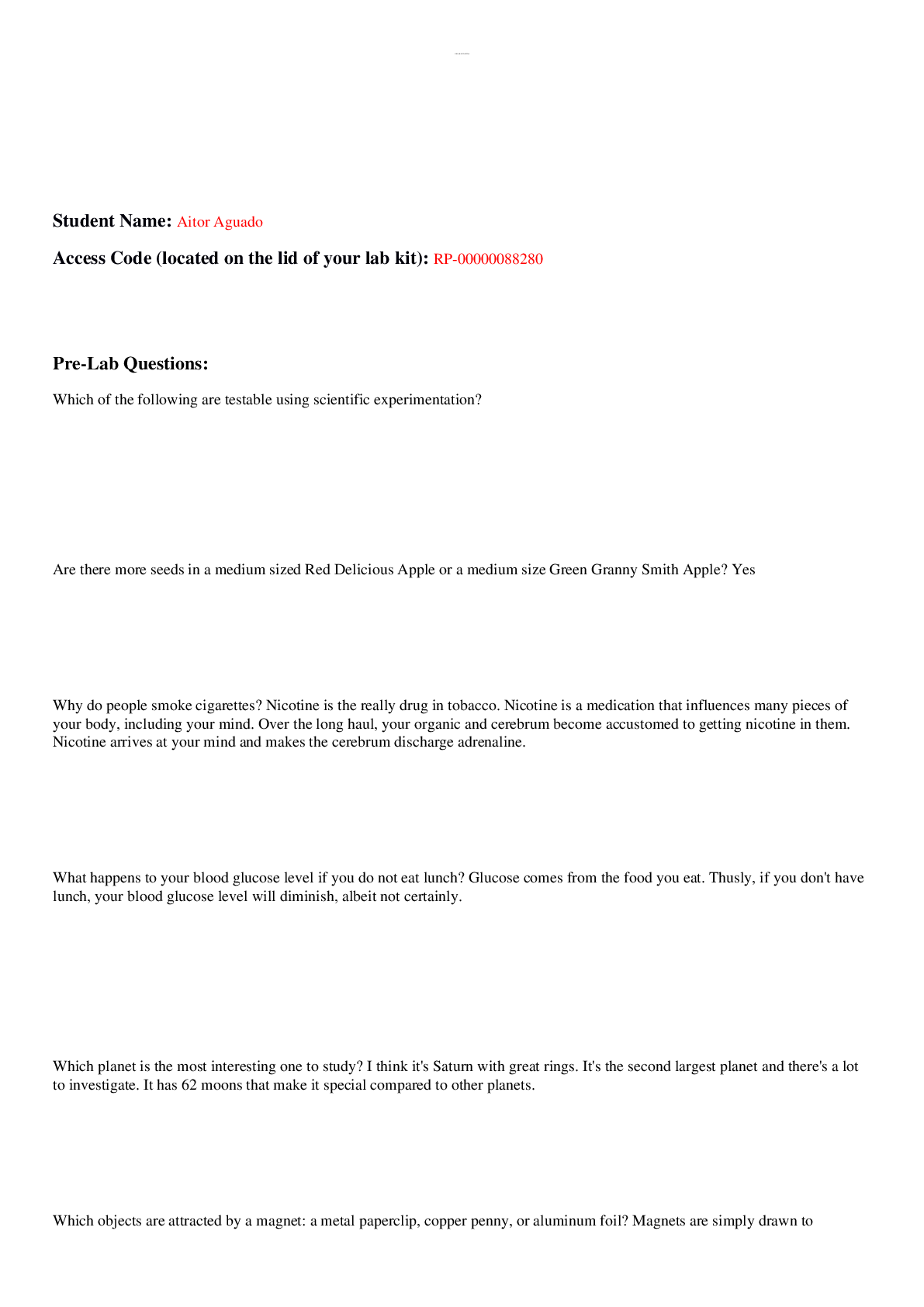
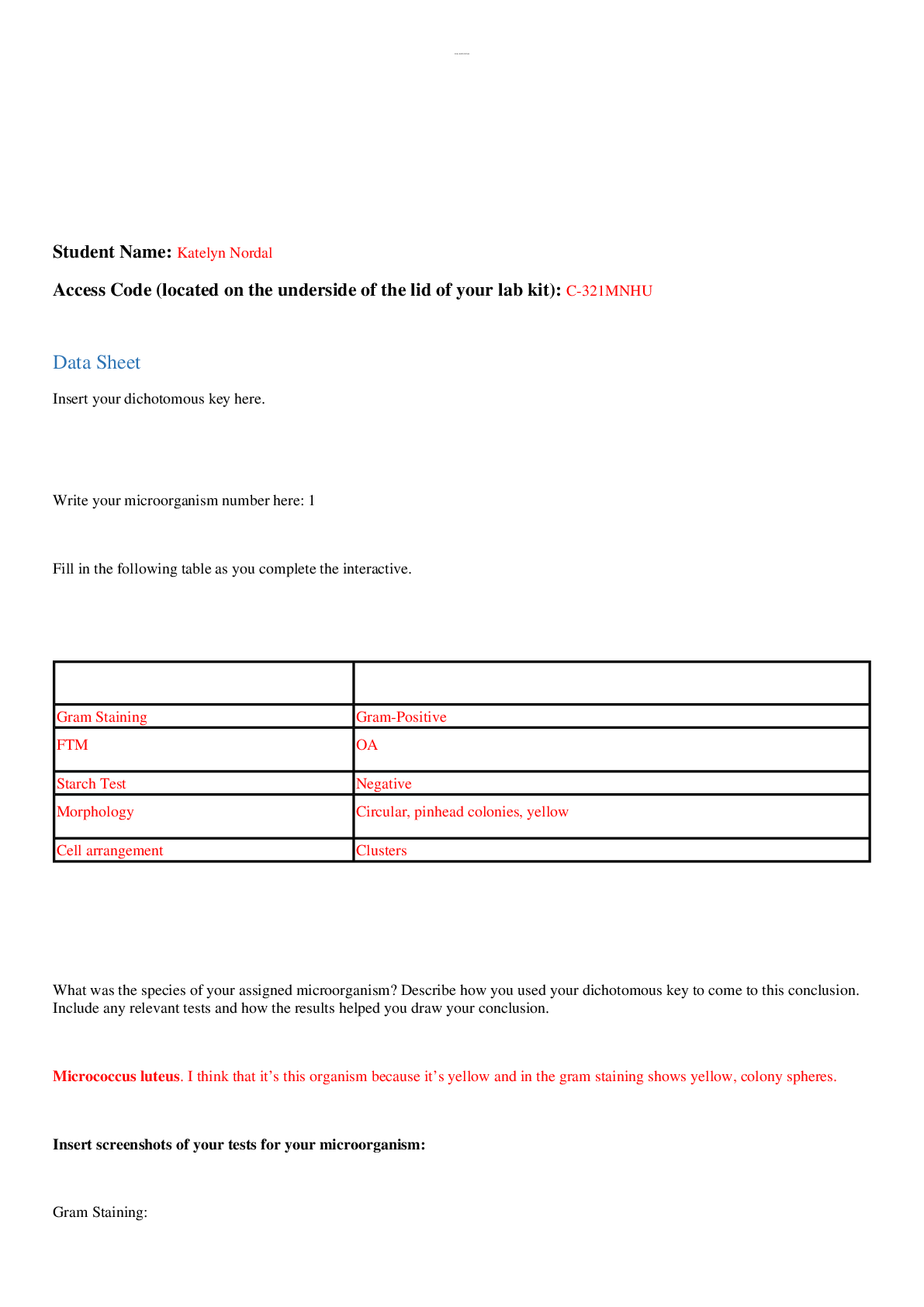


.png)







